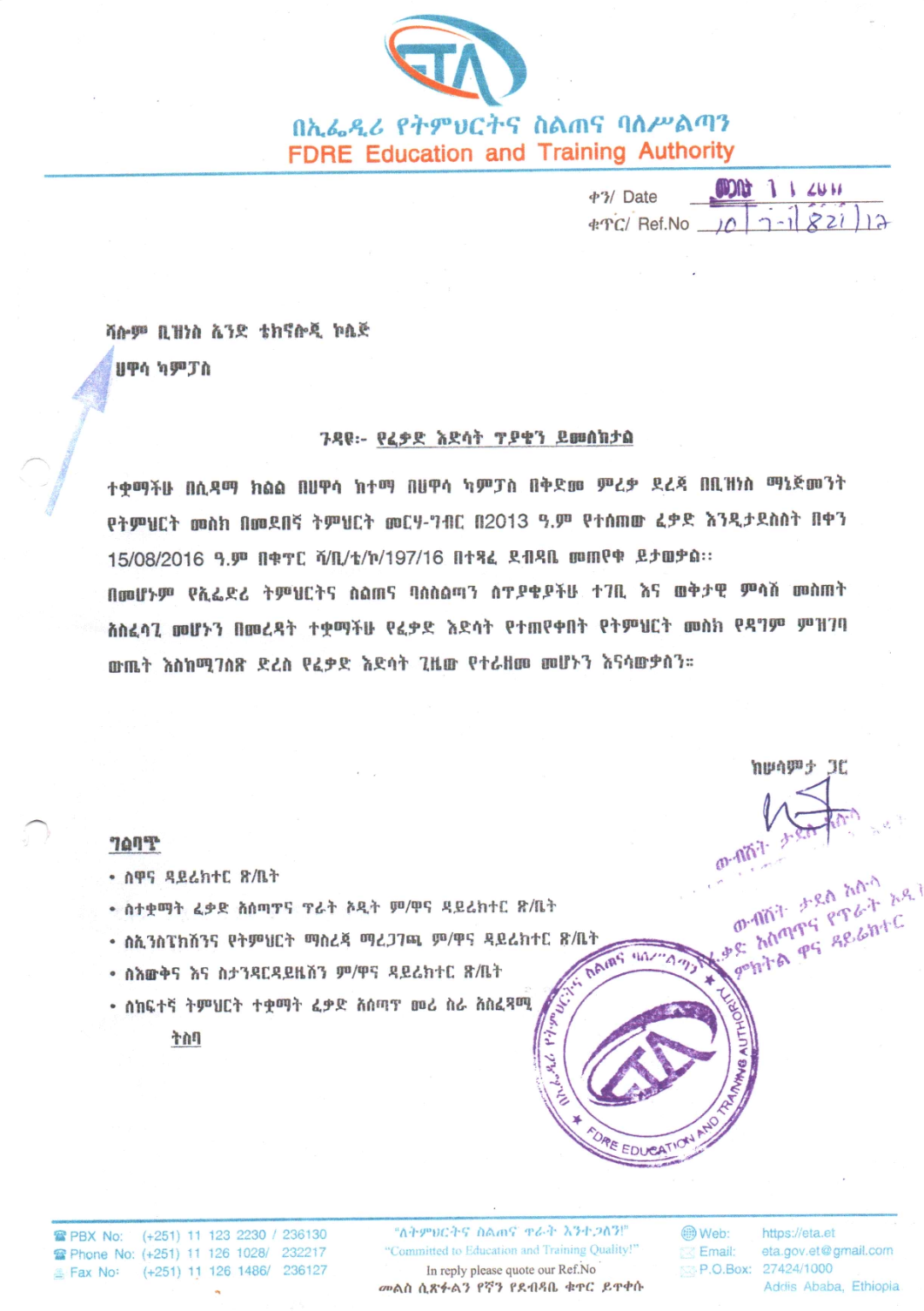
Welcome To Shalom College
Be HERE, BE VIBRANT!
Join our college and take control of your learning journey .


Congratulations
Your admission is successfully confirmed.
Our Academics
Our mission is to educate our students and prepare them for life.
Undergraduate
Graduate
TVET
Training

About Us
Shalom Business and Technology College is a young and dynamic higher education institution established in 2019 in Hawassa, the capital city of the Sidama Regional State, Ethiopia. The College operates under the accreditation and supervision of the Education and Training Authority Ethiopia (ETA), ensuring that all its academic programs meet national standards of quality and relevance. Since its establishment, Shalom College has been dedicated to providing transformative education in the fields of business, technology, and related disciplines. The institution focuses on equipping students with practical skills, critical thinking, and ethical values necessary to excel in today’s fast-evolving world. With a growing reputation for academic excellence, innovation, and community engagement, Shalom Business and Technology College stands as a beacon of opportunity for young people aspiring to build successful careers and contribute meaningfully to Ethiopia’s social and economic development.
Learn MoreOur Programs
Here are our graduate programs
Undergraduate Programs
Graduate Programs
Our Values
Our Vision
Our vision is to be one of Ethiopia's centre of excellence in education, research, and community service by 2025.
Our Mission
Our Mission is to empower students with the knowledge, skills, and ethical values necessary to become responsible citizens. Through a rigorous academic curriculum and participative learning opportunities, we aim to inspire our students to achieve their full potential and positively impact society.
Our History
Shalom Business and Technology College is a young and dynamic higher education institution established in 2019 in Hawassa, the capital city of the Sidama Regional State, Ethiopia. The College operates under the accreditation and supervision of the Education and Training Authority Ethiopia (ETA), ensuring that all its academic programs meet national standards of quality and relevance.
Accreditations
Here are our Accreditations for our programs
- Graduate Program
- Online Modality
Contact us
Access the right education for your future today!!
.jpeg)
.jpeg)
.jpeg)

